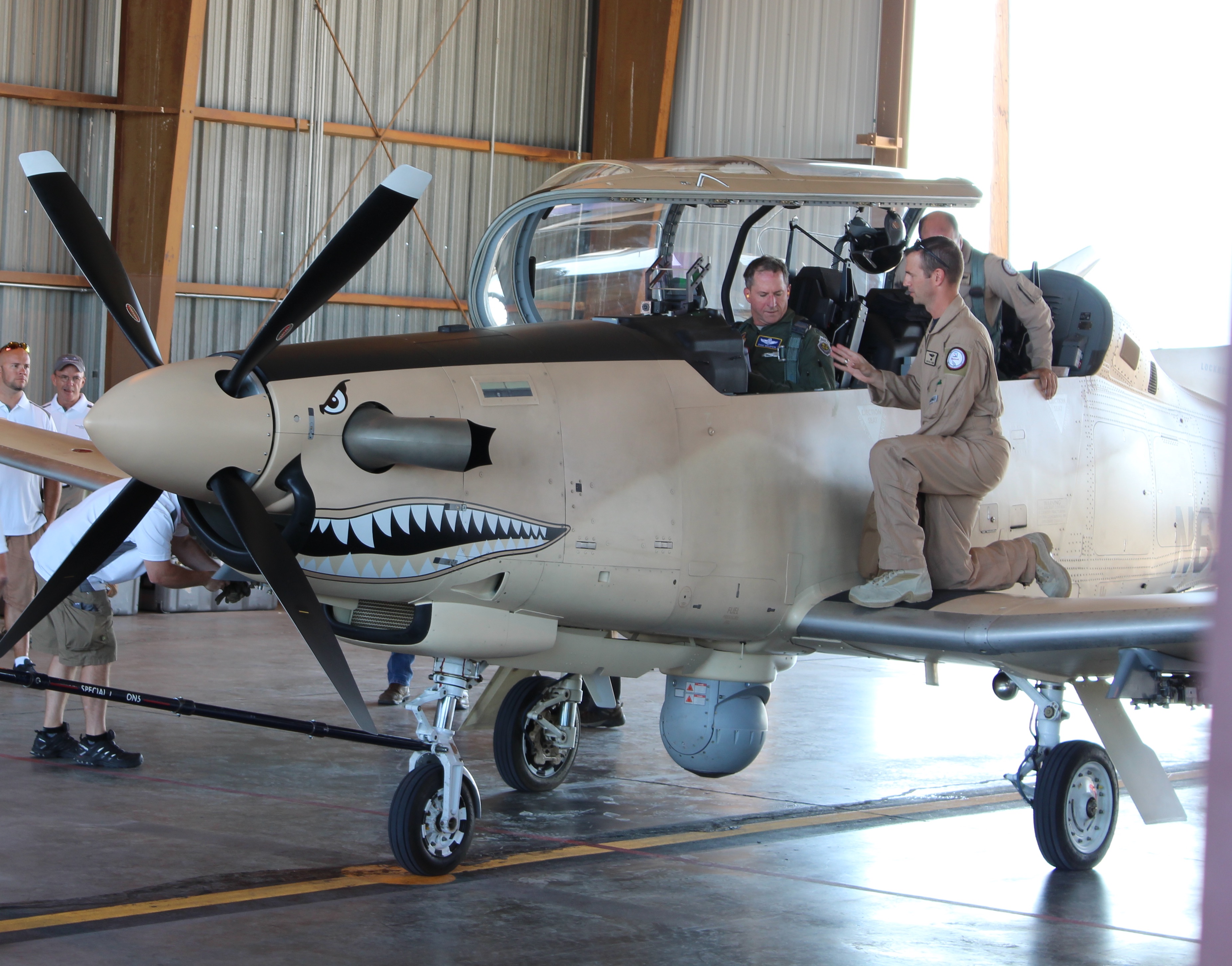
Chief of Staff Gen. David Goldfein flew the AT-6 during the first phase of the Light Attack Experiment at Holloman AFB, N.M. The AT-6 and the A-29 Super Tucano will continue on to the second phase, which will be held at Davis-Monthan AFB, Ariz., from May to July. USAF photo.
Rather than conducting a combat demonstration, the Air Force will hold an additional light attack experiment from May to July at Davis-Monthan AFB, Ariz., with the intent of rapidly moving toward procurement.
Out of the four participants that flew in the original Light Attack Experiment—known as OA-X—at Holloman AFB, N.M., last August, Textron Aviation’s AT-6 Wolverine, which is made by their subsidiary Beechcraft, and the Sierra Nevada/Embraer A-29 Super Tucano will continue on, according to a Feb. 2 release.
“We have decided to work closely with industry to experiment with maintenance, data networking, and sensors with the two most promising light attack aircraft,” said Secretary Heather Wilson in the release. “This will let us gather the data needed for a rapid procurement.”
The Holloman experiment, which cost $6 million, was designed to determine the military utility of the platforms participating. A total of 16 USAF aircrew made up the assessment team, including 12 pilots, four combat systems officers, two military crew chiefs, two weapons loaders, and two ammo troops. Thirteen USAF engineers evaluated the aircraft and six joint terminal attack controllers coordinated test missions.
The Air Force originally planned to send finalists to the US Central Command area of responsibility for a “combat demonstration,” where they would fly real-life combat missions, but decided they had the “right information” to move forward.
“The Air Force is gathering enough decision-quality data through experimentation to support rigorous light attack aircraft assessments along with rapid procurement/fielding program feasibility reviews,” Air Force spokeswoman Maj. Emily Grabowski said in an email. “Acquisition alternatives for a rapid acquisition are in development.”
This time around the Air Force will focus on “logistics and maintenance requirements, weapons and sensor issues, training syllabus validity, networking, and future interoperability with partner forces,” states the release. “The Air Force will also experiment with rapidly building and operating an exportable, affordable network to enable aircraft to communicate with joint and multinational forces, as well as command and control nodes.”
Grabowski said “experiment details and structure are still in the works.” The service also is still working with industry to finalize cost estimates for the Davis-Monthan experiment, she said.
Five international partners observed the first phase experiment and the service said it plans to invite more to observe the second phase, though it declined to say who just yet.
“This effort to find a lower-cost and exportable aircraft for permissive environments is directly in line with the National Defense Strategy,” said Chief of Staff Gen. David Goldfein in the release. “A light attack aircraft would not only provide relief to our fourth- and fifth-generation aircraft, but also bolster our interoperability, so we can more effectively employ airpower as an international team.”
